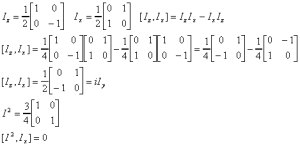un·der·uti·lize
Underutilize is one of those fabricated words, like fiscal cliff, that politicians grab onto when they want to do nasty things to us. According to Merriam-Webster, the first known use of the term took place in 1951. The dictionary doesn't say where or why the term was first used, but I suspect it had to do with somebody taking something away from somebody because they didn't think they were using it enough.
 |
| 1951 |
Let's see, 1951 -- OK in 1951 U.S. nuclear scientists set off the world's first thermonuclear reaction in a test at the mid-Pacific atoll, Eniwetok. They probably thought that the Marshall Islanders were underutilizing Eniwetok anyway, so they used their homes and magnificent coral reefs as an atomic testing ground and used them and their children as radiation guinea pigs. I guess you could say, Eniwetok was turned around.
OK, I'm not really equating nuclear testing with Chicago school closing, some of which may be necessary for budgetary reasons. Just doing a little etymology here.
But Rahm and Byrd-Bennett have taken ownership of this malaprop to justify the closing of another hundred or so neighborhood schools based solely on their definition of underutilization, and their own utilization formula (see below) with no consideration given to how the schools are doing academically, or what a school's existence means to the surrounding community. And they want to proceed without telling anyone, until next summer, exactly which schools they have chosen to put on their closing list.
BBB has even set up a rump group called the Commission of School Utilization to do an end run around the legislature's own legally established Chicago Educational Facilities Task Force (CEFTF) and get around state law mandating the district to present a rationale and get community input before closing any more schools.
 |
| “You are going to destroy communities,” says Laurie Smith, of Esmond Elementary School, a small school in Morgan Park. (Sun-Times) |
The good news is that lots of parents, left to guess where their children will be going to school in the fall, are speaking up for their schools. Parent and community groups with help from university researchers are debunking some of the underutilization misinformation being handed out by the board. The questions they are raising are good ones, like:
- How can a small, high-performing school be targeted for closing for being "underutilized"?
- How much of the drop in CPS enrollment is artificially caused by the board's shift in resources to privately-run, non-union charter schools?
- How is the board's proposed destruction of neighborhood schools destabilizing neighborhoods and adding to the problems of violence and the mounting death toll among the city's youth?
- How can a school be considered underutilized when it has overcrowded class rooms?
 |
| CPS' space-unilization formula |
Activists and some parents take issue with how the district calculates its ideal building capacity. Jeanne Marie Olson, a parent with the Raise Your Hand coalition, has been analyzing class sizes and the way the district calculates “utilization.” They don’t always go hand-in-hand, she says. In some cases a school is labeled "under-enrolled," but it may have overcrowded classrooms.
Olson adds that CPS is overstating the number of schools that are underutilized and overcrowded because officials are not sticking to the district’s recommended class size limits when calculating overcrowding. The calculation allows for a maximum of 36 students in a class before it’s considered overcrowded and labels anything below 25 as underutilized. In other words, Olson suggests, CPS is treating 30 students as a target — not a cap.
The Sun-Times reports:
Leslie Austin Thomas’s voice shook with emotion as she described her “heartfelt” reaction to problems surrounding the Charles Wacker Elementary School her daughters attended. “How do you fill classrooms when the majority of the homes in our communities are boarded up? “Those children are no longer in the neighborhood, and I would hate for this commission not to understand the entire picture because it’s going to be different for every Chicago public school.”
More coming.
This blog post has been shared by permission from the author.
Readers wishing to comment on the content are encouraged to do so via the link to the original post.
Find the original post here:
The views expressed by the blogger are not necessarily those of NEPC.
